I routinely transit la Piazza della Santissima Annunziata each morning when I accompany Eleanor to preschool, and again when I return home to the palazzo where we live.
Perhaps at midday, bringing a critical but forgotten item back up to the kids’ school – a lunch ticket, a felpa (hoodie), a change of clothes. Or meeting Jason for lunch in the blocks around Gonzaga in Florence, most often la Trattoria di San Gallo, or Il Giglio in a pinch for their four-euro fresh pasta plates, consumed next to office workers in suits and workmen in jumpsuits, their hands white with plaster or chalk.
It is a space I now know well, and have come to love: the Brunelleschi arches of the Ospedale degli Innocenti, stretching in uniform conformity along the eastern side of the piazza, each little swaddled putto slightly different than the one next to it, as though to underscore the humanity of orphans and lost children. The western side of the Loggia dei Servi di Maria, and its apartments overlooking their own set of steep steps. The arcades of Michelozzo’s church of the Santissima Annunziata, on the north side, where I often duck in to make a quick petition to God, or any god, or any presence (I fold fast) who might be willing to receive it. The two walrus-man fountains in bronze reign in the middle, and hotels and restaurants line the south side, at the intersection of what I like to call the Gateway to the Molten Tourist Core of Florence. Via dei Servi begins at the south side of the piazza, and its crowded pavement extends all the way to the duomo, visible in slices between tall buildings crowding the narrow street.
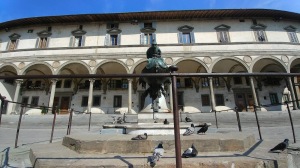 |
| Walrus fountains, Santissima Annunziata. |
And yet, for all these flagstones and fountains and architecture, what captures my attention is the name: the most holy annunciation. What has not been chosen, when the lots are drawn. Mary, learning that she’s bearing none less than God’s only begotten Son. No choice there for a twelve-year-old Palestinian girl headed into an arranged marriage.
 |
| Tiny tokens once attached to a foundling. |
Thousands of Florentine orphans and children of impoverished families passed through L’Ospedale degli Innocenti for hundreds of years, from 1445 to 1875. The museum inside maintains all the records of the babies, and while some of them did grow up and go on to be productive members of Florentine society (artists, statesmen, orphanage administrators), many met an early end as they failed to thrive, shuttled as newborns between city and country, and paid wet nurses. Giovanni died at 13 days old, one tag read. Annamaria died three days after arriving, said another. The tiny tarnished bit of a broken medal on a frayed piece of ribbon all that remained to remember them by. The hope that the two pieces might be joined again one day.
Not all babies met such a quick end; many survived, and indeed, thrived. This was a boon to the Silk Guild, the underwriters of the orphanage budget. There is always a reason. There is no simple charity. What was in it for the powerful silk guild, the owners of not only the bronze statue of St. John the Evangelist that graces one of the outer niches of the Orsanmichele Church, but of the entire loggia of the Orsanmichele itself and the statues of all the other thirteen Florentine guilds, wealthy and working class alike? There is always a reason. Think. Think hard. What could a guild of wealthy and powerful silk merchants want to do with a seemingly endless supply of small, young, nimble hands?
Carding silk. Weaving silk. Being apprenticed to the many textile workshops in the city.
And so the mutually beneficial, if lopsided, arrangement thrived for years, as the child labor of the orphans benefited the business pursuits of the wealthy and powerful silk merchants who funded their home.
So, they had a social safety net, but no child labor laws… win some, lose some. Still, light years ahead of their time, and frankly, a revolutionary concept.
The women who had been met with ruin as unwed mothers and fallen women were consigned to a disturbing fate within the Ospedale, giving up their own baby and being stationed in a wing for newborns, where they would lie in bed, a baby on each side of the bed under the curlicue of a mosquito-netted cot. The women would breastfeed around the clock while a medical nurse attended to them. Having recently returned from six years myself in the Land of Breastfeeding, I mentally uttered a firm nothankyou upon viewing those archival photos.
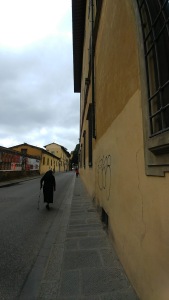 |
| An aged nun makes her dogged way down to Santissima Annunziata. |
I always see priests, monks, and nuns in these blocks, walking up and down the sidewalks in sensible sandals and habits and robes as they have done for centuries. I thought also of the religious orders, and how getting thee to a nunnery was almost never a free choice, but rather an option of last resort for women without marriage dowries, women from poor families, and orphans. Perhaps the suor was the tenth of twelve children, in a merchant family down on its luck, and the next-eldest sister scraped the last of savings for her marriage. Or more rarely, a wealthy young woman who wished to continue an unusually profound education, but was barred from doing so via the institutions available at the time, so probably begged her father to deposit her dowry in a convent and went there to study and read, or write, or write music.
All these people, all these forced choices. I suppose when a forced choice is termed something along the lines of a most holy announcement, it goes down a tiny bit easier, or much more easily for the faithful. After all, God’s choice. Who are humans to presume to choose the lot they’d like to receive in this life?
Another cast of characters that give me pause for thought are the mendicants of Santissima Annunziata. Staking out a post at the well-trafficked entrance to the church virtually guarantees a profitable day of begging
. There is a fairly standard set I see in the arches and the portico.
An African mother who has been separated from her three daughters by Italian immigration authorities (as best as I can tell from her literature and her science-fair-esque poster display, which is heartrending) hands out flyers and asks for help to pay a huge legal bill that might resolve her issue and reunite her with her daughters.
The Rom women, in their mismatched print scarves and long skirts, socks with cork sandals, and gleaming braids.
A man who looks like he could be Rom, but also possibly a college student, with a level of grooming far too fine to really seem down on his luck.
Another man who truly is down on his luck is frequently seated on the step at the entrance of the cloister, to the west of the main church entrance. His grubby hands and rheumy eyes speak to a lifetime of suffering; his clothes are layered and poorly patched. He watches the street, and one morning, months ago, I accidentally dropped Eleanor’s gingham string bag with her extra change of clothes. I was on my bike, and did not notice until I was at her school. I returned to the piazza, and the beggar had darted out in the street to pick up the bag, and was waiting for me on the step with it in his hands. I thanked him profusely and gave him a euro. A few weeks ago he was perched on his step with two breathtaking black eyes that made me inhale hard when I saw him. He looked as though someone had beaten the crap out of him on a dark street, and they probably had. His injuries were awful, but I see him every day, and he is slowly returning to his normal. The nuns and priests always give him coins, even though he does not position himself at the entrance of the church to preen and curry favor with the faithful like the handsome Rom/not-Rom youth.
I empty out my coin purse to this cast, whether just walking by or opting to duck into the church for a quick five minutes with the thousands of lit taper and oil lamps. One day, I gave the Rom/not-Rom youth a euro on my way out. One of the Rom women (clearly not a friend of his) saw me do it. She quickly sidled up to me on the marble floor under the arcades, following me closely, her entreaties growing louder and more agitated as I repeated, mi dispiace (I’m sorry) until she finally devolved into a few profane threats, and I crossed the street.
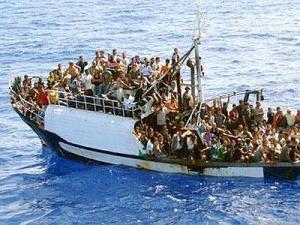 |
| The Adnkronos, Lampedusa, Italy. |
Another group that drifts through the space are the African immigrants. They are clearly those with the least choice. Even the Rom are swaggering and confident next to the nervous glances of the Africans, toting their trays of tissues and umbrellas from corner to corner, or, if they have just arrived, simply holding out a cap – literally. The situation between Africa and Europe is always in the news, and getting worse; the recent refusal to permit first one, then two, then three migrant boats from landing in Italy while Matteo Salvini crowed that he was somehow taking back Italy. Make Spain and France take those boats! The young men, always under twenty-five, it seems, break my heart. I can see and smell the white salt in their tears, their hands and hair, and I don’t know what to do to help them. The Italian government gives them homes, I am assured, none of them sleep on the street. Yes, but what of their days on the street, on the sidewalk, the utter lack of dignity? The looks and comments they endure? What choice did they have to stay or leave where they came from? I always say buongiorno, and I always feel their resolution to not show weakness, to keep that stiff upper lip, to hold strong on their corner. Can we allow dignity to those who have had no choice?
And to those who say, but they had a choice, I invite you to get out of your comfort zone and try their “choice” on for size, for a month or two, and come back and tell me if it was true choice or a forced choice. Because these are my former immigration clients stateside, and I know all their stories, in both type and detail. What poverty, what violence, what want they experienced where they were born. Go somewhere, if you haven’t been, to see for yourself. See what circumstantially forced choices feel like, look like.
The choices we have, and the choices we do not have, are cast in high relief on the Most Holy Announcement (hilarious and businesslike in English, with little of the Italian solemnity), its church and its piazza. I reflect on my choices and my forced choices in this life – my lot, my inheritance, if you will.
I am fortunate in this life to have accessed a wide array of actual choices – and also fortunate to see when my forced choices were neither good nor bad, but simply a path I followed because it opened up to me, like Via dei Servi between two fountains, down a narrow shaded street, meeting the massive orange cupola of the cathedral as the Piazza del Duomo lays out its grey flagstones on the other end.


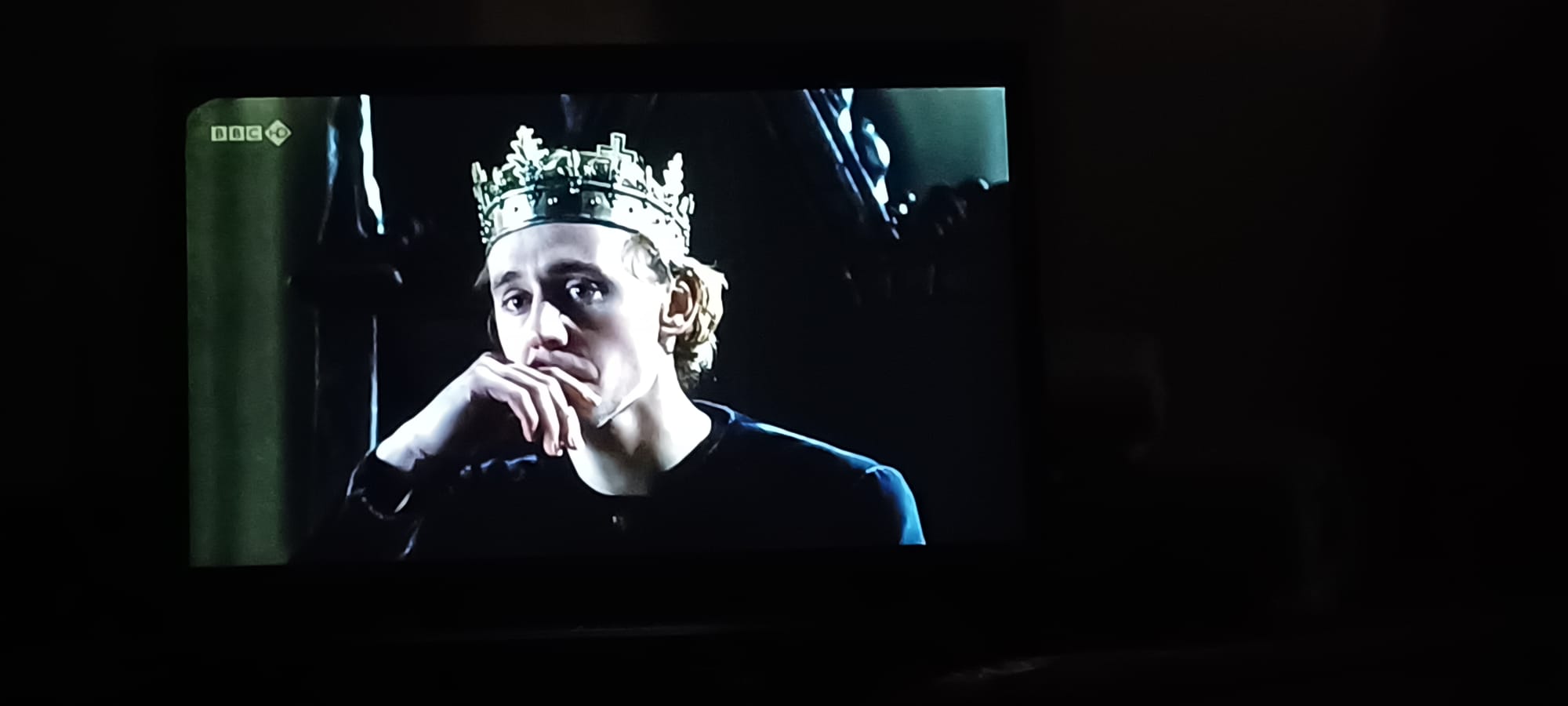
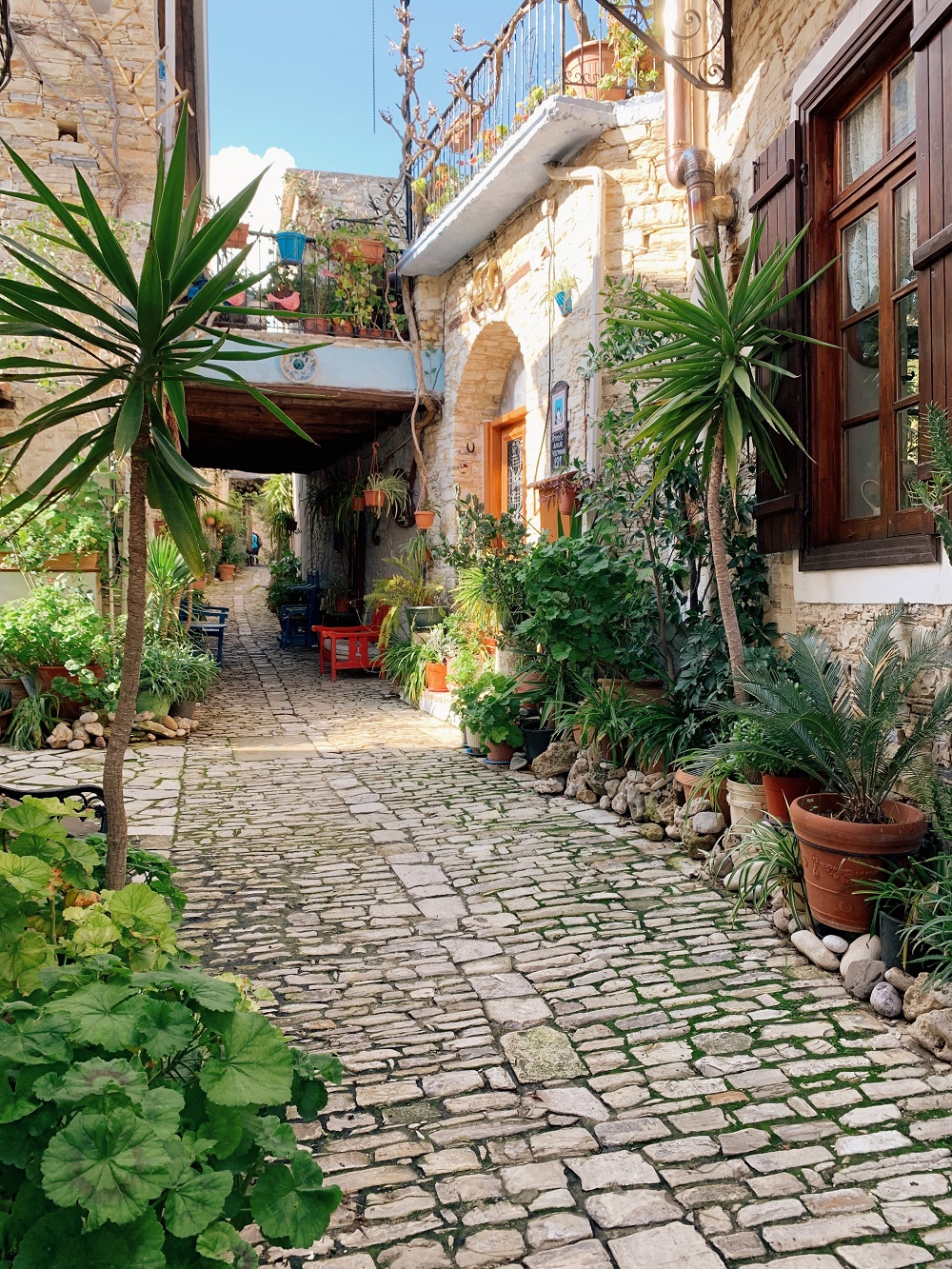
3 Responses
Beautifully written, and deeply thoughtful about the idea of choices and how different these choices are for those of us who are privileged Westerners versus others (some of whom we see in the pews each Sunday at St Janes Church.
Really thoughtful and thought-provoking. I am sickened here by the non-choice of the children put in cages and in what feels to me like concentration-campesque atmospheres. I search for the true humanity and find so little.
Beautiful meditation on choice. Thank you for sharing your words, compassion, and insight with the world!